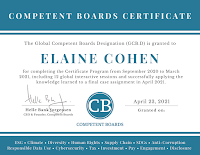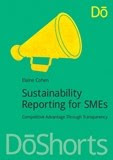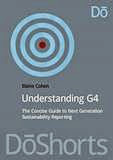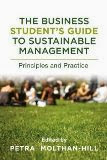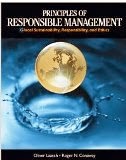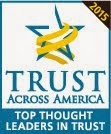You are the CEO of a company that has been publishing a Sustainability Report for the past few years. On balance, you enjoy the report and find that it is a good reflection of your sustainability performance. You haven't received any
awards but you have received some positive feedback from your Board, some customers, suppliers and your own management team. After a few years on the reporting cycle, you have some questions about the costs of producing the report, the time and resources involved, the presentation of the report and the impact the report has on stakeholders. Usually, you are pretty hands-off and leave people to get on with things. However, you feel it's time to understand the Sustainaibility Reporting process a little more closely. You have invited your Sustainability Reporting Manager (SRM) for a little chat. Well, actually, an interview. Because you want answers. Here are the 20 questions you should plan to ask your SRM. You might not want to ask ALL of them in one session!
How are you?
This is as good a question as any to start an interview with. Ask genuinely and listen to the answer. You never know what might emerge that's worth your knowing.
What's new?
Many many moons ago, I attended a Leadership Program which included a strategy session run by the inspiring
Ram Charan. One of the things he talked about as a feature of great leadership, which has always stuck in my mind, was the fact that a leader is always asking questions and eager to listen to the answer. Just as a simple question such as:
How are you? can be a real floodgate opener, so can the question:
What's new? be an opportunty to learn lots about what's top-of-mind in your business and also about the person you are asking. Anyone who answers the question
What's new? with the answer:
Nothing much has obviously checked out of life for a while, because in life, work and in sustainability reporting, there is always something new.
What aspect of our last Sustainability Report are you most proud of ?
A positive and open ended question for a gentle introduction to the subject. The SRM should be able to talk with enthusiasm about the sustainability report and in response to this question is free to select the things that personally gave her the most safisfaction. Whether these things are the same as those which are important to you, the CEO, or to the business, will give you an idea as to how well your SRM is aligned with the business and with your aspirations. The response may also enlighten you about things you may not have realized were such a big deal as you read the Sustainability Report.
What specific objectives were established for the Sustainability Report and how were they met?
There are many different types of possible objectives for Sustainability Reports. These may relate to the collaborative process of developing the report, the cost, the adherence to an agreed timetable without a last minute rush, the amount of time invested, the quality of the output (which may be the report content, design or presentation) or objectives might also refer to the range of feedback received after publication of the report. Of course, we are assuming that your SRM did actually establish objectives. If not, that begs another question.
Was the Sustainability Report prepared in accordance with an action plan and clear timetable and to what extent did performance align with these plans?
The reporting process is no less important than the product of the process. Quality process usually means quality report. Also, the reporting process can often be an example of how of other cross-functional projects are managed in the organization. Any reporter who begins without an action plan, timetable and allocation of roles and responsibilities (usually a Steering Team for the report is preferable) is heading for a last-minute scramble, headaches and much conflict before the report is finally published. As CEO, you should be interested in embedding good process in your business, as well as delivering a good report.
How many work-hours of our company employees were invested in the production of our last report?
The report budget often does not include the woman/man/hours of company employees engaged in the reporting process. It includes consulting, design, PR, marketing, printing and all other accociated and easily quantifiable costs. However, doesn't employee time also cost money? As a consultant, I log all my hours and can tell you exactly how much time (and therefore money) I have spent on anything from a major client project right down to this blog post or volunteering work. Knowing the time and cost of your reporting process is half the way to managing it more efficiently.
How much of our Sustainability Reporting budget was spent on external consultants?
Of course, I am biased, being a Sustainability Reporting consultant:) but it is always worth having some external help when writing your Sustainability Report. However, you should know how much it is consuming of your total reporting budget.
Was the Sustainability Report produced in line with budget? If not, what was different?
Sustainability Reports have a talent for coming in over budget. The SRM is a business manager and must know how to manage budgets. This question is more about understanding if your SRM has it covered than understanding the gory details of what was spent where.
How many of our employees have read the report and how many have provided feedback?
Aha. This is a great question. If your Sustainability Report is not reaching your employees (supported by a proactive process of dialogue) then you are probably not gaining all the potential benefits of reporting. How can employees reflect the company's Sustainability Performance to external stakeholders if they are not familiar with the report? Your SRM should be in close collaboration with the HR function to ensure that the internal organizational processes include engagement with the Sustainability Report.
How many new recruits read our Sustainability Report and did this infuence them in accepting a job with our company?
Everyone likes to quote figures about how potential new recruits (including the zillions of Green MBA and
Net Impact grads that join the job market each year) seek socially responsible employers. But once and for all it might make sense to check whether those who joined your company were actually influenced to do so by your sustainability performance.
How many Managers have used the report in discussions/presentations/meetings with external stakeholders?
Your Managers are your sustainability ambassadors and the Sustainability Report is a key tool in their arsenal, whatever their role in the company. If they are not using your Sustainability Report, your SRM is not engaging them effectively. Your SRM should have her finger on the pulse of how your Sustainability Report is being used in the organization.
What insights have you gained from the last Sustainability Report that will be helpful in producing the next report?
Every report is a learning process. How does your SRM learn from experience? How does your SRM value continous improvement? This question will enlighten you.
What did we choose not to report on and why not?
Almost all reports are trade-offs. Legal, marketing, finance, HR team members almost always have something they prefer not to disclose for different reasons. In many cases, these "Secrets" may not be critical to the report's integrity but in some cases, they might be quite telling about the organization's challenges. As CEO, you would probably want to know what your people are fearful about disclosing and why.
What were your disappointments in producing your last Sustainability Report?
Maybe there weren't any. Maybe the report turned out exactly as your SRM envisioned. Maybe not. Understanding how your SRM measured up to her own expectations may tell you a little about the organizational issues your SRM faces in driving sustainability processes. These are the issues where a helping hand from the CEO might just be what is needed.
Who were your greatest allies in the company in producing the Sustainability Report?
Yes, here is the list of people to give fat bonuses to at the end of the year:)
Whose support did you need but did not get?
This sounds a bit like a whistleblowing question, but that's OK, occasionally. I think the CEO should know who is blocking the process. If sustainability is important to you as CEO, and reporting is a key part of that, you need to have set your expectations clear. If your people are blocking progress, you might want to consider how this should affect their performance review, bonus or career development prospects. As a minimum, you might want to talk to them to find out what prevented them from being collaborative.
Why should we continue to produce a Sustainability Report?
This is a fundamental question that every company should ask itself before re-embarking on the process another year around. The answer may not be the exactly the same each year and its worth taking a few minutes to articulate specific hopes for this cycle of the reporting process. NB: The response, "because we reported last year" is not really quite good enough.
What are your objectives for the next report and how will you measure success?
Following on from the existential "why are we doing this" question, the obvious next thing to ask is "how will we know if we have done it well". As a minimum, you should expect to hear quantitative targets such as adherence to budget and on-time publication, but equally, qualitative targets about the process of reporting should not be overlooked. Does your SRM intend to get feedback on the process of developing the report? Did your SRM run an effective Reporting Steering Team in which people have had the opportunity to influence? If your report is the single-handed work of your SRM and a consultant, you can bet there's something essential missing.
What help do you need from me in the next reporting cycle?
Asking the question doesn't commit you to providing all the help requested, but it does give you an idea of the state of mind of your SRM. The SRM should be pleased to receive help and support from the CEO and I can think of hundreds of ways the CEO could support the reporting process. An SRM who responds "nothing, really" to this question is probably not doing the best possible job.
Fancy some ice cream ?
How can you have a conversation about Sustainability Reporting without ice cream?
When should we have another little chat?
Be prepared for a non committal response :)
elaine cohen, CSR consultant, Sustainability Reporter, HR Professional, Ice Cream Addict. Author of CSR for HR: A necessary partnership for advancing responsible business practices Contact me via www.twitter.com/elainecohen on Twitter or via my business website www.b-yond.biz/en (BeyondBusiness, an inspired CSR consulting and Sustainability Reporting firm)




